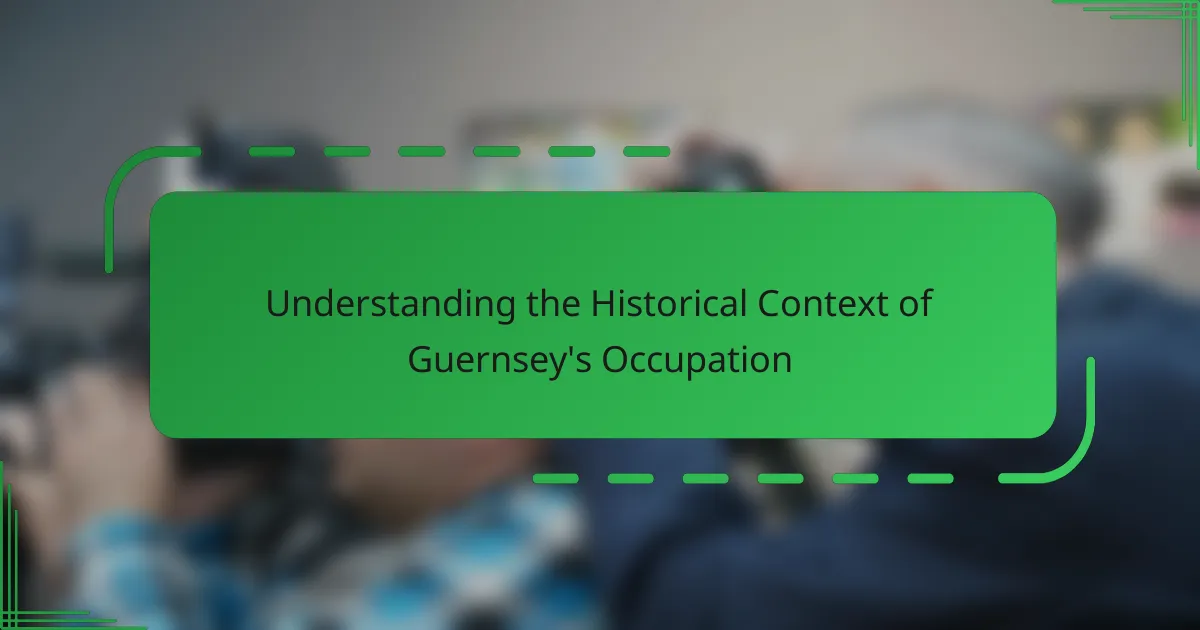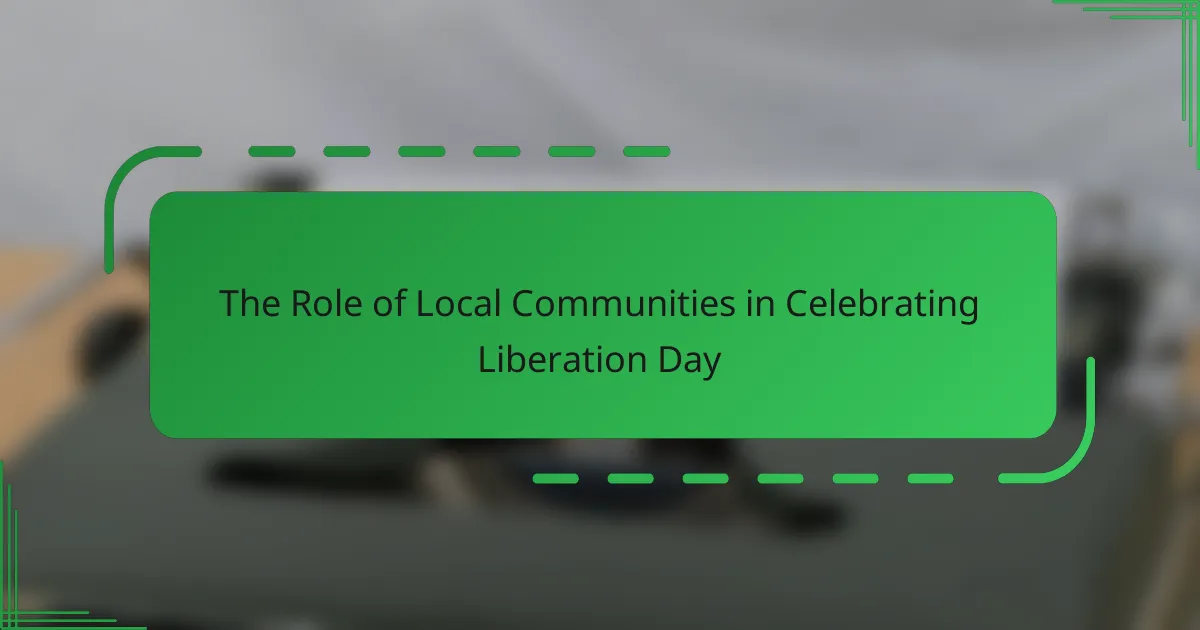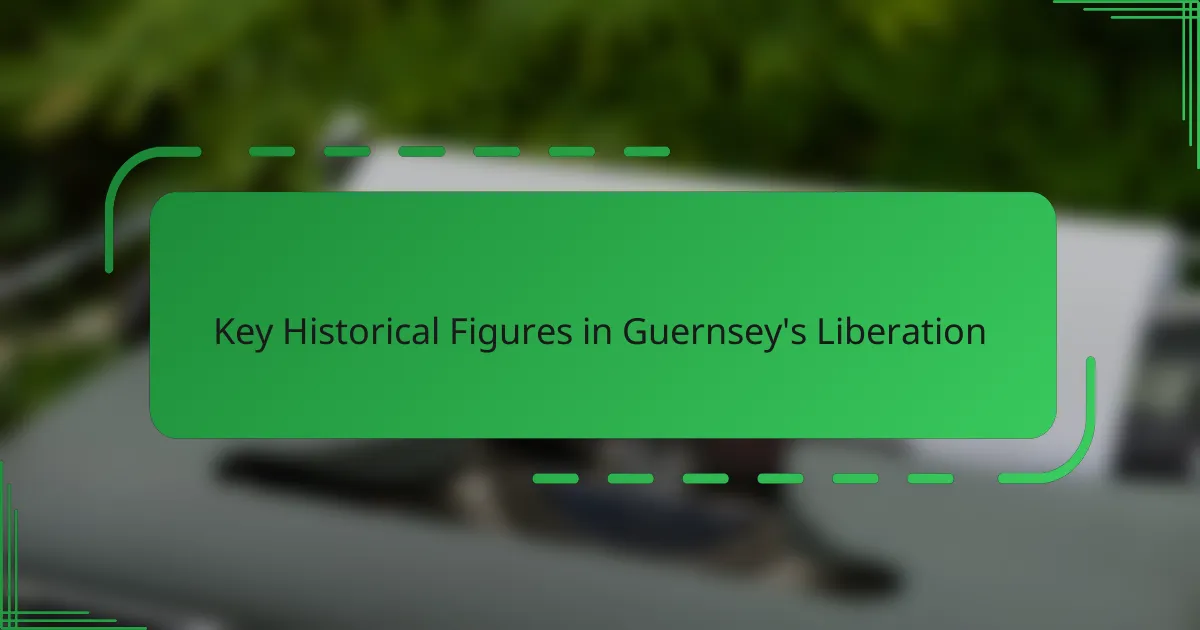Guernsey’s occupation during World War II, beginning with the German invasion in 1940, marked a pivotal chapter in the island’s history, lasting until its liberation in 1945. This five-year period was characterized by military governance, resistance efforts, and profound changes to the island’s social and economic fabric, ultimately shaping its identity and resilience. The German military strategies employed during this time aimed to fortify their control and prevent Allied counterattacks, leaving a lasting impact on the community.
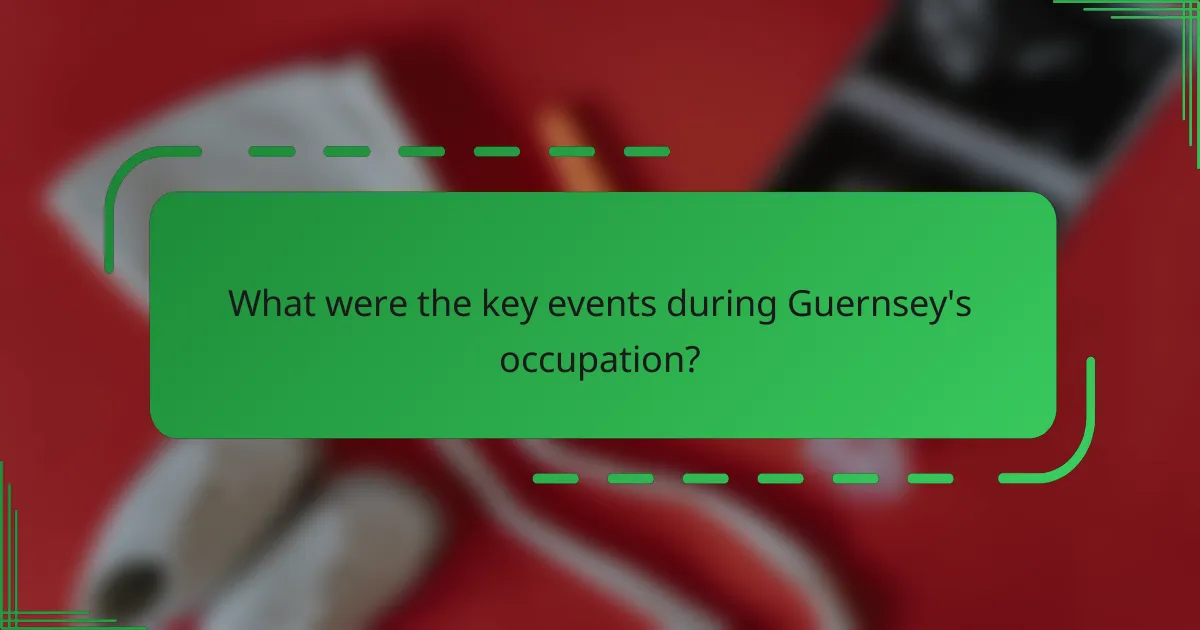
What were the key events during Guernsey’s occupation?
Guernsey’s occupation during World War II was marked by significant events that shaped the island’s history. The German invasion in 1940 initiated a five-year period of military governance, resistance efforts, and eventual liberation in 1945.
German invasion in 1940
The German invasion of Guernsey occurred on June 30, 1940, as part of a broader strategy to secure the Channel Islands. The island was occupied without significant resistance, leading to the establishment of German military control. This marked the beginning of a harsh regime that would last for several years.
Establishment of military governance
Following the invasion, the Germans implemented a strict military governance system on Guernsey. This included curfews, censorship, and the requisition of resources to support the occupying forces. The local population faced food shortages and strict regulations, which significantly impacted daily life.
Resistance movements
Despite the oppressive environment, various resistance movements emerged on Guernsey. These groups engaged in acts of defiance, including sabotage and the dissemination of anti-German propaganda. Although their efforts were often met with severe reprisals, they played a crucial role in maintaining morale among the local population.
End of occupation in 1945
The occupation of Guernsey ended on May 9, 1945, following Germany’s surrender in World War II. Liberation was met with widespread celebration, as residents welcomed British forces back to the island. The end of the occupation marked a significant turning point, leading to post-war recovery and rebuilding efforts in Guernsey.
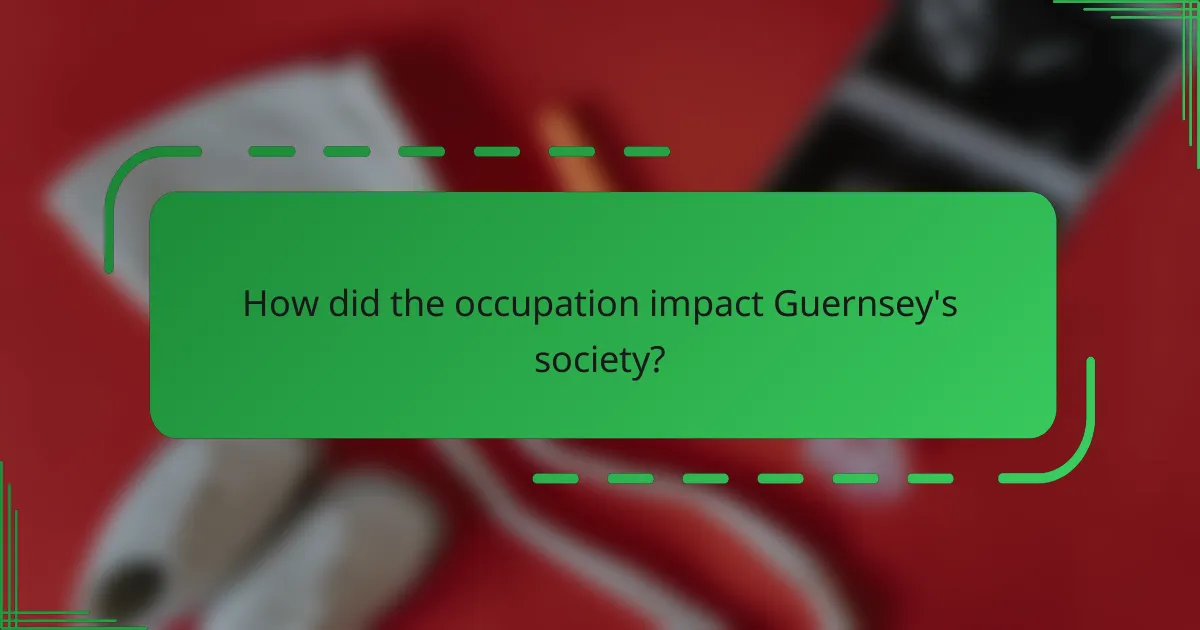
How did the occupation impact Guernsey’s society?
The occupation significantly altered Guernsey’s society, affecting daily routines, economic stability, and community relationships. These changes shaped the island’s identity and resilience during and after the occupation period.
Changes in daily life
Many traditional activities were curtailed, and the presence of occupying forces altered social interactions. The community had to find new ways to maintain morale and support one another amidst the challenges they faced.
Economic effects
The occupation severely impacted Guernsey’s economy, disrupting trade and leading to shortages of essential goods. Local businesses struggled to survive under strict regulations imposed by the occupiers, resulting in a decline in economic activity.
Despite these challenges, some sectors, like agriculture, adapted by focusing on local production to meet the needs of the population. This shift laid the groundwork for post-occupation recovery and resilience.
Social dynamics and community resilience
Social dynamics in Guernsey shifted as the community faced the realities of occupation. Neighbors often banded together to share resources and support one another, fostering a sense of solidarity and resilience.
Community initiatives emerged to counteract the effects of occupation, such as underground networks for smuggling goods or sharing information. These efforts not only helped individuals survive but also strengthened communal bonds that persisted long after the occupation ended.
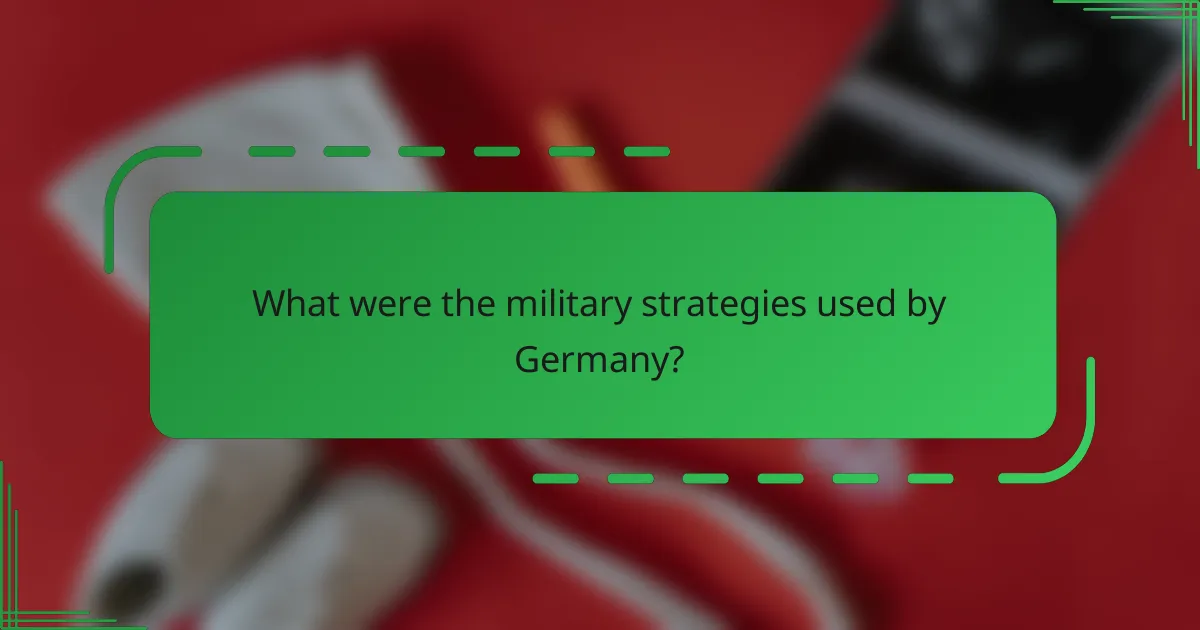
What were the military strategies used by Germany?
Germany employed several military strategies during its occupation of Guernsey, focusing on fortification, resource utilization, and strict control measures. These strategies aimed to strengthen their hold on the island and deter Allied forces from launching counterattacks.
Fortification of coastal defenses
The fortification of coastal defenses was a primary strategy for Germany in Guernsey. They constructed extensive bunkers, gun emplacements, and anti-aircraft positions along the coastline to protect against potential invasions. These fortifications were designed to create a formidable barrier, making it difficult for Allied forces to approach the island.
Key structures included the construction of concrete bunkers and artillery positions that could withstand aerial bombardment. The use of local materials helped speed up the construction process, allowing for a rapid buildup of defenses.
Use of local resources
Germany effectively utilized local resources to support its military operations in Guernsey. This included commandeering food supplies, materials, and labor from the local population to sustain their troops. By leveraging these resources, the German forces minimized their logistical challenges and maintained a steady supply chain.
Local industries were repurposed to support the war effort, with many residents being forced into labor for construction projects and resource extraction. This not only bolstered the German military presence but also strained the local economy and affected daily life for the islanders.
Surveillance and control measures
Surveillance and control measures were critical to maintaining German authority over Guernsey. The occupation forces implemented strict curfews, monitored communications, and employed local informants to gather intelligence on potential resistance activities. This created an atmosphere of fear and compliance among the local population.
Regular patrols and checkpoints were established to enforce these measures, ensuring that any dissent was quickly suppressed. The use of propaganda also played a role in controlling the narrative and discouraging resistance, as the Germans sought to present their occupation as beneficial to the islanders.
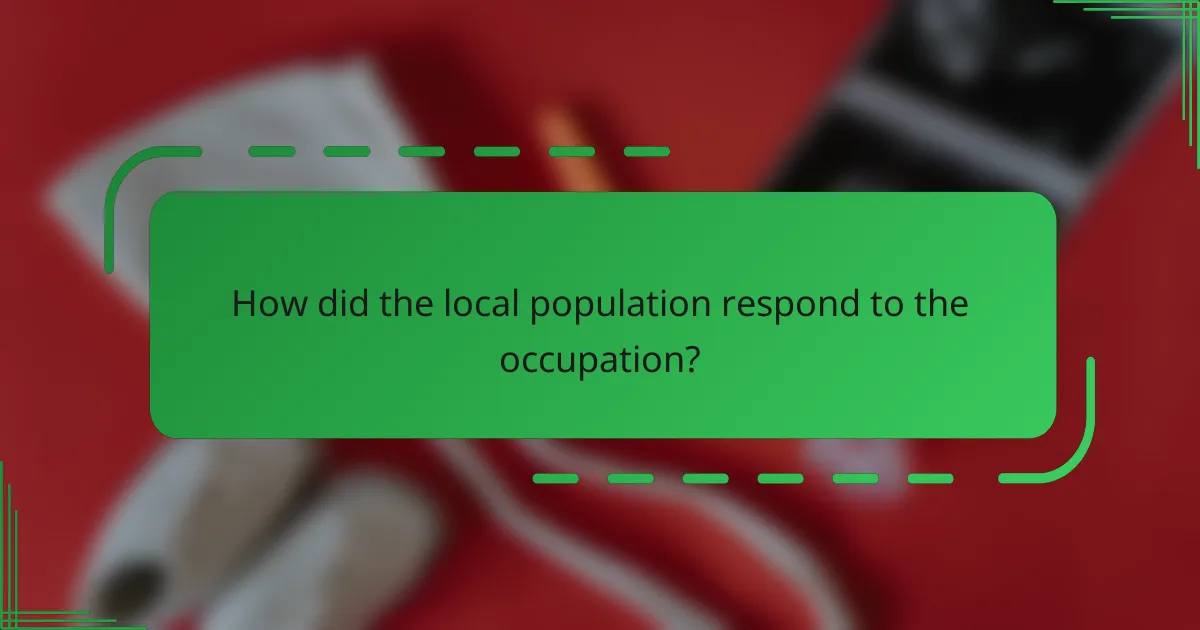
How did the local population respond to the occupation?
The local population of Guernsey exhibited a complex response to the occupation during World War II, characterized by both collaboration and resistance. While some residents cooperated with the occupiers for survival, others engaged in acts of defiance and formed underground networks to oppose the German forces.
Collaboration with occupiers
Many Guernsey residents chose to collaborate with the German occupiers, often out of necessity or to ensure their own safety. This collaboration included working in German-run businesses, providing resources, or even joining the local administration under German control.
Some individuals believed that cooperating would lead to better conditions for their families, while others were motivated by the hope of maintaining a semblance of normalcy during the occupation. However, this collaboration often led to tensions within the community, as those who resisted viewed collaborators with suspicion.
Acts of defiance
Acts of defiance against the occupation were prevalent among the local population, reflecting a strong desire for freedom. Residents engaged in various forms of resistance, such as distributing anti-German propaganda, sabotaging German operations, and hiding escaped prisoners of war.
These acts, while risky, were vital in maintaining a spirit of resistance among the population. They served to boost morale and foster a sense of unity among those who opposed the occupation, despite the severe consequences that could follow if caught.
Formation of underground networks
Underground networks emerged as crucial elements of resistance during the occupation, facilitating communication and support among those opposed to the Germans. These networks organized secret meetings, shared information, and coordinated efforts to assist those in need, including refugees and escaped soldiers.
Members of these networks often operated in secrecy, using coded messages and safe houses to avoid detection. Their efforts not only provided practical support but also helped to sustain hope and resilience among the local population during a challenging period in Guernsey’s history.
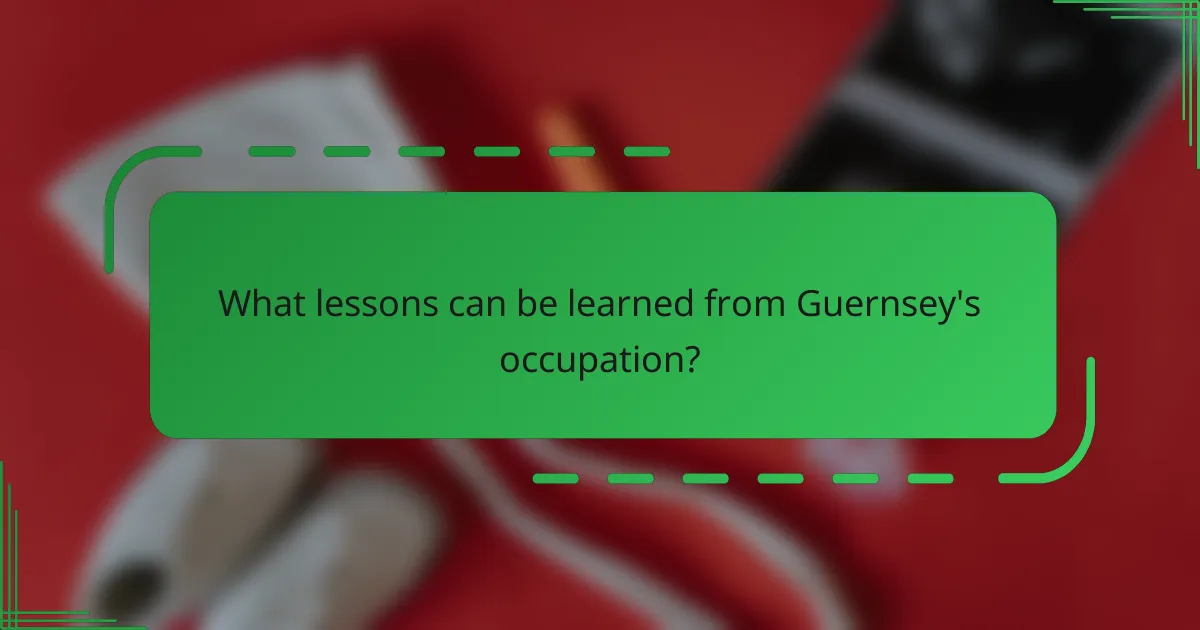
What lessons can be learned from Guernsey’s occupation?
The occupation of Guernsey during World War II offers critical insights into resilience, community strength, and the importance of external support in times of crisis. These lessons highlight how collective efforts and outside assistance can significantly impact survival and recovery in challenging circumstances.
Importance of community solidarity
Community solidarity was vital during Guernsey’s occupation, as residents banded together to support one another. This unity fostered a sense of belonging and shared purpose, which was crucial for morale. For example, local groups organized food rationing and shared resources, ensuring that the most vulnerable members received assistance.
Building strong relationships within the community can enhance resilience against external pressures. Encouraging open communication and collaboration among residents can help create a support network that is essential during difficult times.
Impact of external support
External support played a significant role in alleviating the hardships faced during Guernsey’s occupation. Aid from organizations and individuals outside the island provided necessary resources, such as food and medical supplies. This assistance not only helped sustain the population but also reinforced the sense of hope and connection to the wider world.
To maximize the benefits of external support, communities should actively seek partnerships with organizations that can provide aid. Establishing clear communication channels and understanding the needs of the community can help ensure that assistance is effectively utilized and reaches those who need it most.
